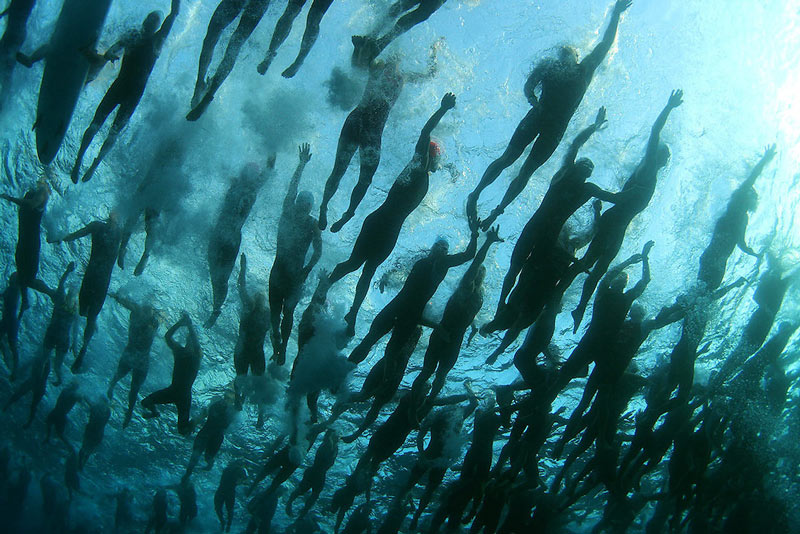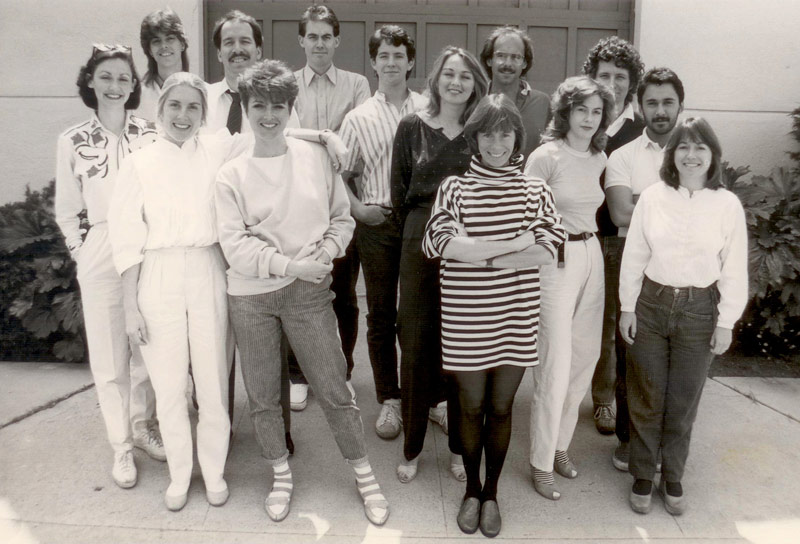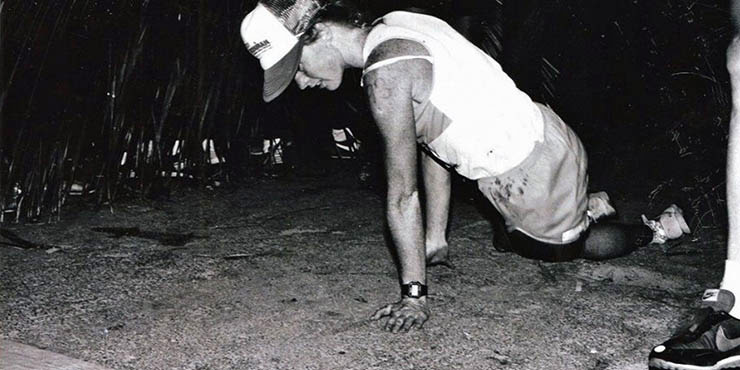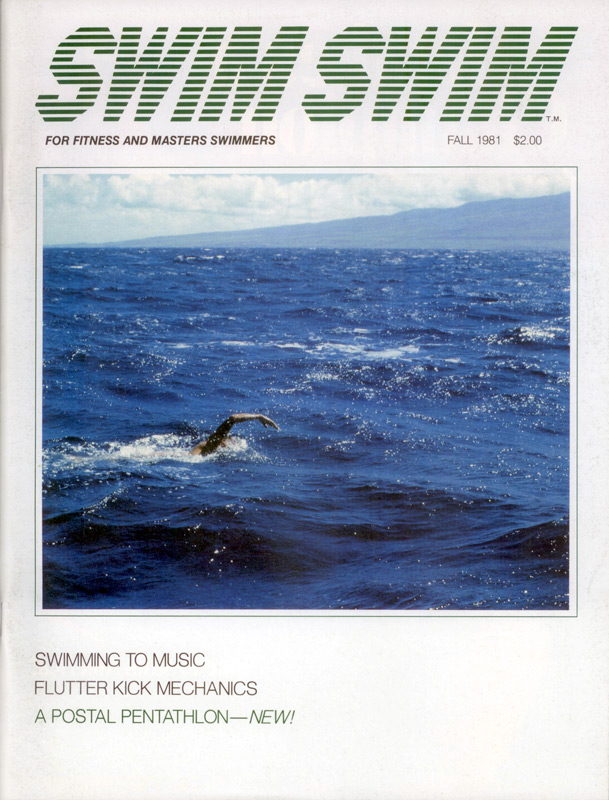
Here’s what happened…
The small, sports magazine publishing company I had co-founded in Los Angeles wanted to expand its shoestring operation. We were considering launching another title and had been watching the growing popularity of multi-sport events: run-swim-runs, biathlons, and increasingly, triathlons. We tested a couple of one-shot publications in that genre to good results in 1981 and again in early 1982. But we needed more info. It was time for some on-the-ground research. On the Big Island of Hawaii.

In case you don’t know, the Ironman Triathlon started in 1978 on Oahu as a kind of bar bet to see who was the fittest athlete: the runner, the cyclist, or the swimmer. U.S. Navy Commander John Collins combined three existing events on the island and challenged anyone to do all three without stopping: the 2.4 miles of the Waikiki Rough Water swim (which this author has completed several times), the 112-mile Around-Oahu Bike Race (it was actually a two-day race of 115 miles but Collins compressed it and shaved it down), and the 26.2-mile Honolulu Marathon. Collins said, “Whoever finishes first, we’ll call him the Iron Man.” Twelve of 15 entrants finished that unique race the first year.
Word of mouth about this “crazy new sport” took off when a Sports Illustrated article about it by Barry McDermott appeared after the 1979 race. Hundreds of would-be Ironmen/women contacted Collins to participate the next year.
The event grew in popularity until it skyrocketed to fame after the February, 1982 event, when participant Julie Moss, who was leading the race (which had now moved to the Big Island), collapsed and literally crawled her way across the finish line. But not before Kathleen McCartney ran by her at the very end to claim the victory. It was Julie’s excruciating spaghetti-legged crawl that captured the TV audience’s attention around the world. Here was someone who had pushed herself to her physical limits, and then kept going.

Her experience was the essence of the mantra, “anything is possible.” Moss commented that the 1982 race was a spiritual awakening that inspired her to explore greater challenges.
“A goal needs to capture your imagination,” she explained. “You have to start with something unimaginable and then let it percolate not just in your mind, but down to your heart. When you get your heart and your mind going, your body will follow.”
Jump ahead to the October 1982 edition of the race (they had two in that year in order to settle on an annual fall date to help those who lived and trained in northern latitudes). On that Saturday morning I was ready and excited. I wanted to put myself in the shoes of an Ironman triathlete. What would it feel like? How bad could it hurt? Could I even finish the race?
I considered myself to be in pretty good shape at the time. I mean, I was a solid open-water swimmer, my cycling was decent enough, and I had already completed a couple of short-distance triathlons that summer. But this was the Big Kahuna of them all. The Ironman. Even the name was daunting. And I had never run a marathon before; I think 15 miles was my longest run up to then.

I was determined. And not just about the market research in trying to understand the audience of our new, proposed magazine (another purpose of the trip was to raise the needed money to launch the thing!). It quickly became a personal challenge for me. Was I up for that challenge? My imagination said yes. But was my body?
The swim was the easy part for me. The image at the top of this post shows the chaotic confusion of having 850 people all swimming and thrashing toward the same turn-around point. But I quickly joined a few other top swimmers, and we took the lead as a pack. I immediately recognized Mark Allen and Dave Scott, who would go on to win the race, and the four of us settled into a high-intensity rhythm of “drafting,” which involves one swimmer in the lead and the others falling in behind in a straight line to take advantage of the “slipstream,” then circulating the pack with a new lead swimmer. This is the same tactic used in bike racing.
Then the strangest thing happened. Our lead pack of four hit the finish ramp close together, and we took off running into the transition area to change into our cycling and running clothes. The other guys must have been getting their hair blow-dried and fingernails done because when I saddled up my bike and headed out of the transition area, I was staring at a hundred lenses of filmmakers and photographers on the back of the ABC TV camera truck. I was in first place!
There was a kind of funnel you had to ride through, and a mass of spectators was lined along both sides, screaming their heads off. At ME! The roar of the crowd and the shock of leading the race almost knocked me off my bike. But I put my head down and started pedalling with all I had.
And then my back gave out.

I’ve always had back problems (I have mild case of scoliosis, or curvature of the spine), and I had kept them in check with strengthening and stretching exercises. But my back decided it would rebel against me just as I started the 112-mile ride out into the desolation of the black lava fields around Queen K Highway that runs along the western coast. Great timing.
I tried everything to ease the pain, even getting off the bike and rolling my back on the hot asphalt. But nothing helped and cyclists whizzed by me for the next few hours. It was demoralizing.
When I finally arrived at the bike-to-run transition around the eight-hour mark—having dropped from 1st place to around 100th—I was spent. For a moment I hallucinated that the race was over until I saw runners passing me going the other direction. Oh yeah, I realized, there’s still a full 26-mile marathon to run. Ugh.
It took every bit of inner grit and resolve I had to not sit down, drink a gallon of papaya juice, and just say to hell with it. But I didn’t. I reluctantly laced up my running shoes and headed back out onto the same black highway that shimmered with heat waves in the late afternoon.
I started a slow shuffling run and even managed to pass a few people, but that spurt was short-lived. As the sun set, so did my legs. They were turning into jelly. I started a half-jog, half-walk. Soon, that turned into a stumbling walk.
Then it got dark. Really dark. There were no street lights on this bleack highway in the middle of a lava field. It was literally lava black with the night’s moon still not up.
I finally heard someone breathing next to me. It was an acquaintance from Southern California who was in the same condition I was. So we made a pact: let’s stay together all the way to the end. We would finish this thing, no matter what.
And we did. Below is a photo of Mark Richert and me breaking into a final jog to cross the finish line together. Total elapsed time: 12 hours 24 minutes. Incredibly, good enough for 273rd place out of 850 starters.
I was an Ironman.


It’s a really inspiring story.
I am glad to read it!
Thank you for your comment! (sorry I missed it for so long)
Lot of remarkable history HJ, good life!
Thank you, Gerry. Swimming in the sea of life.
Thanks HJ. Great story. Those were the days! Only a couple of years after we met. I finished the February race with Julie Moss and the October one with you OLD friend, and the next summer we completed the CircumSwim of Manhattan Island! So long ago on the calendar but so present in our mind’s eye. Love, RM
… and you’ve been there for so much of it, Richard. We’ve seen much, my friend.
What a fantastic story. Really inspiring, Harald! Thank you for sharing it.
Thank you, Andrew. And an interesting thing is that this year’s Ironman is occurring RIGHT NOW. They’re eight hours behind us East Coasters, so they’re just getting started. But the night and the black lava await!